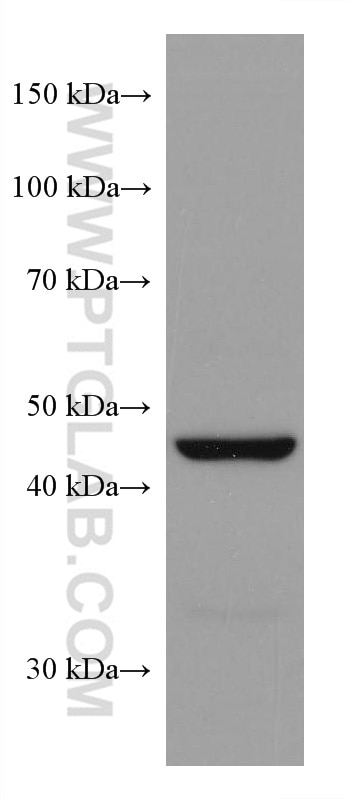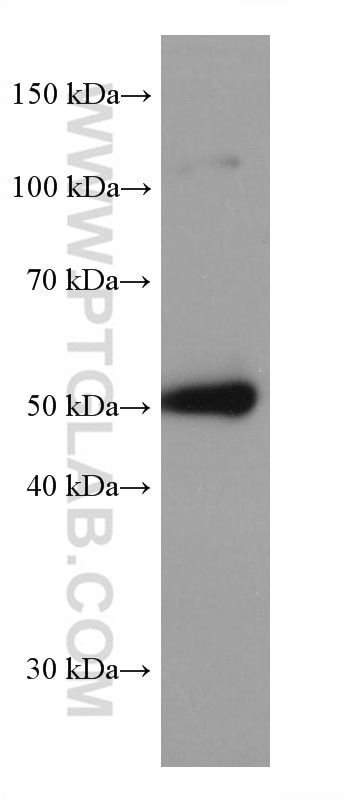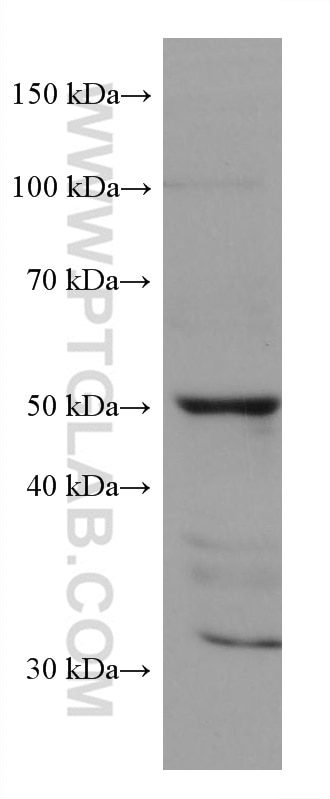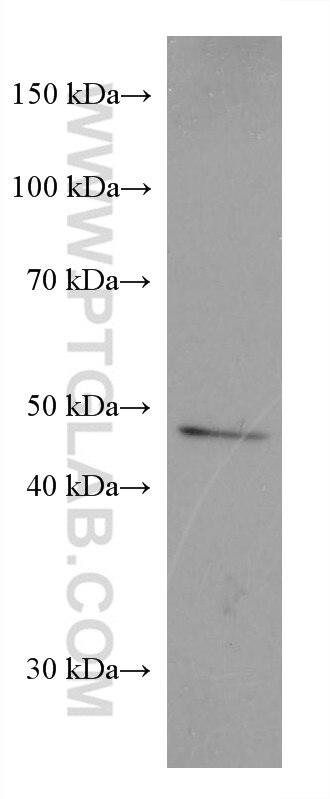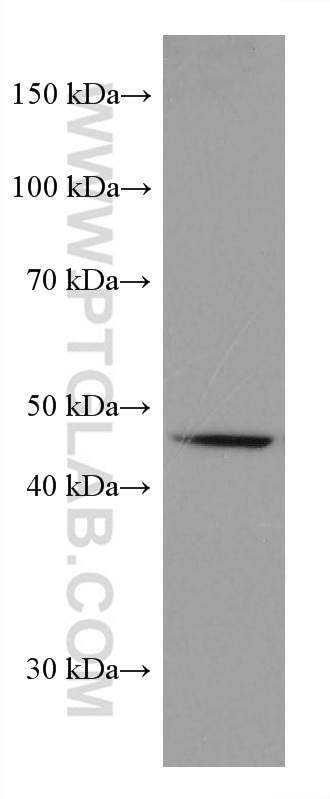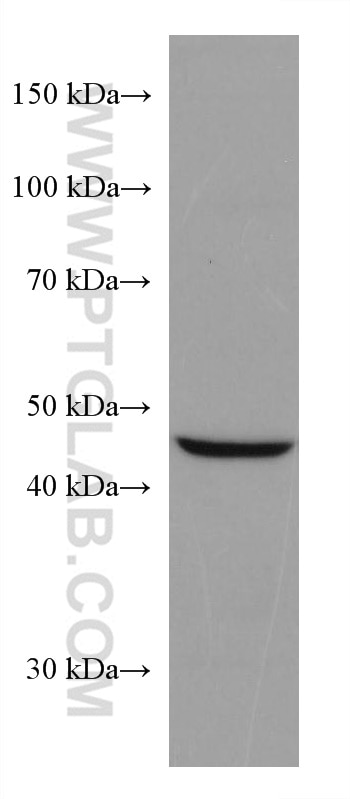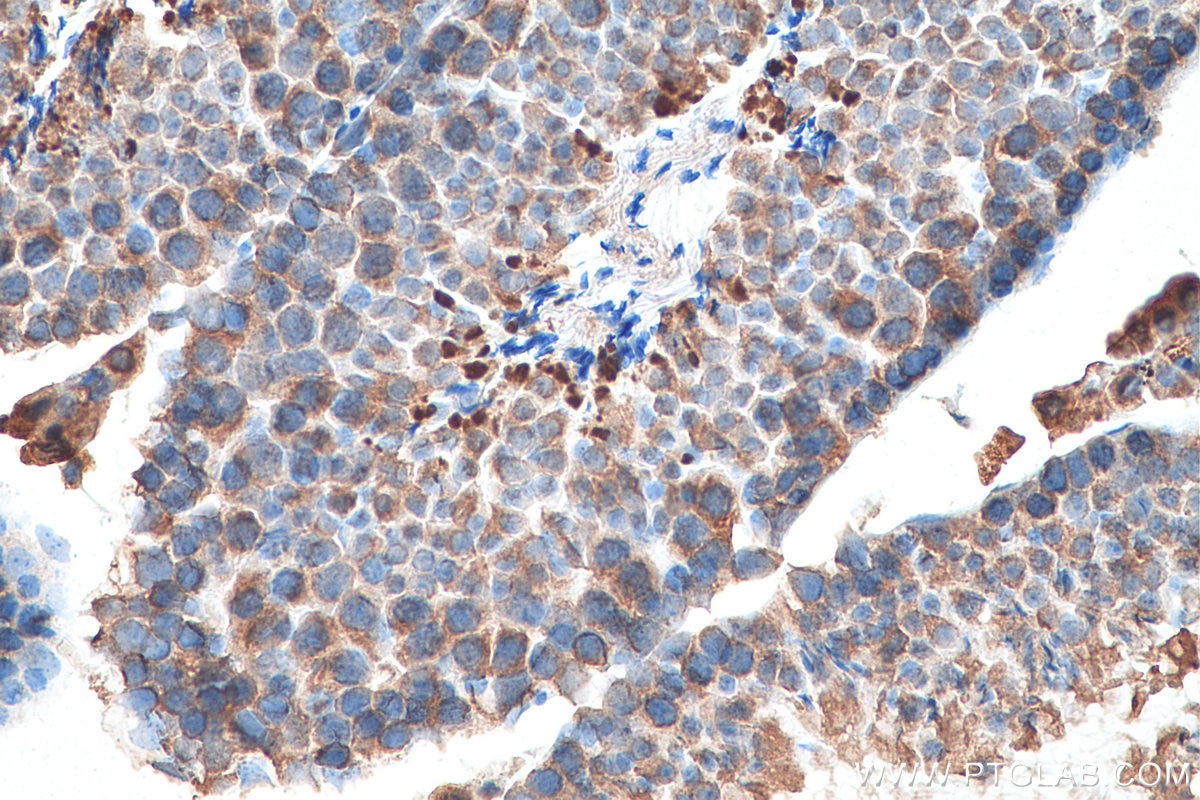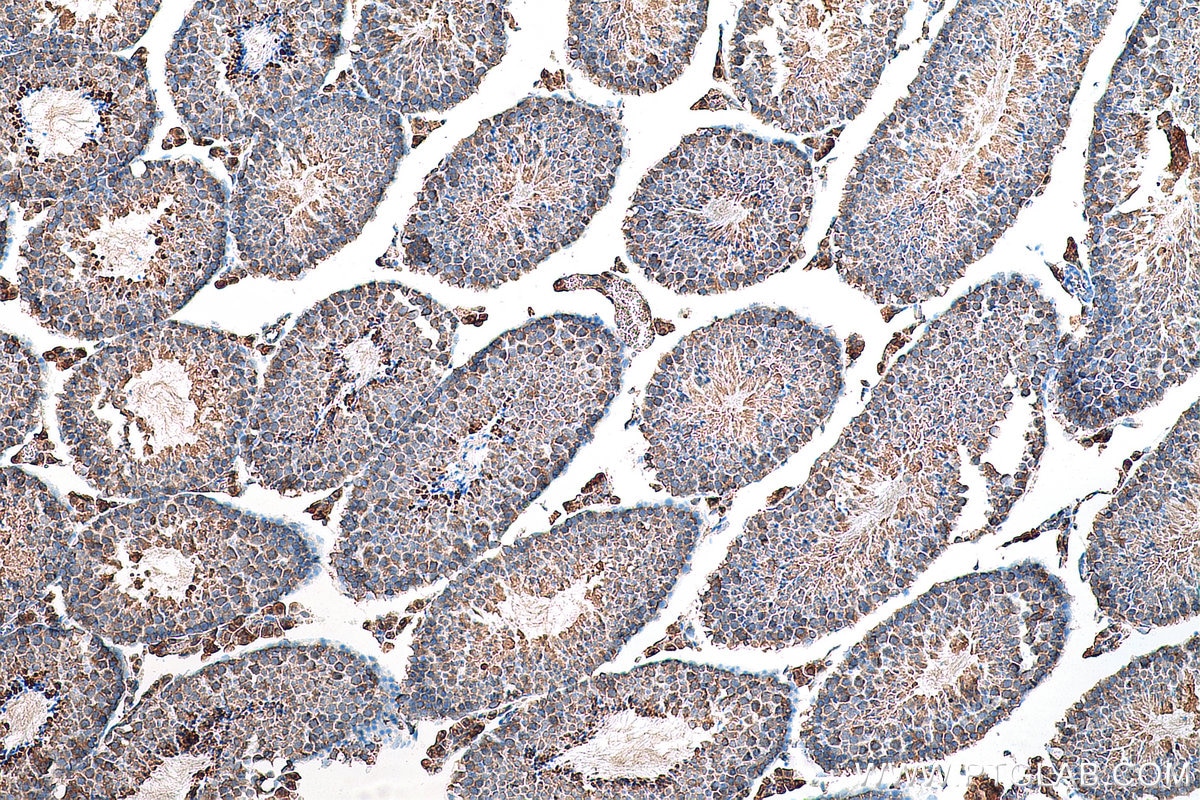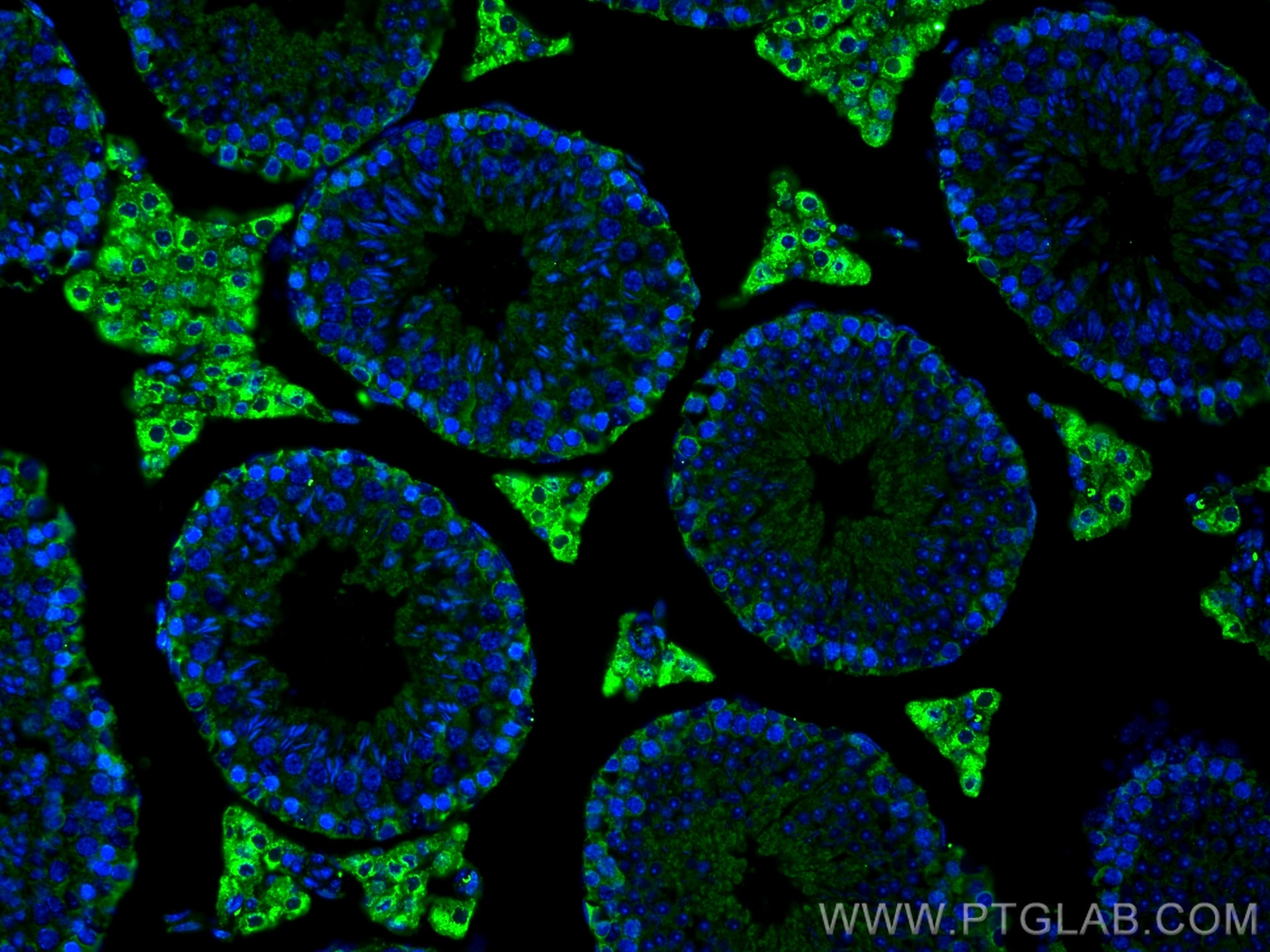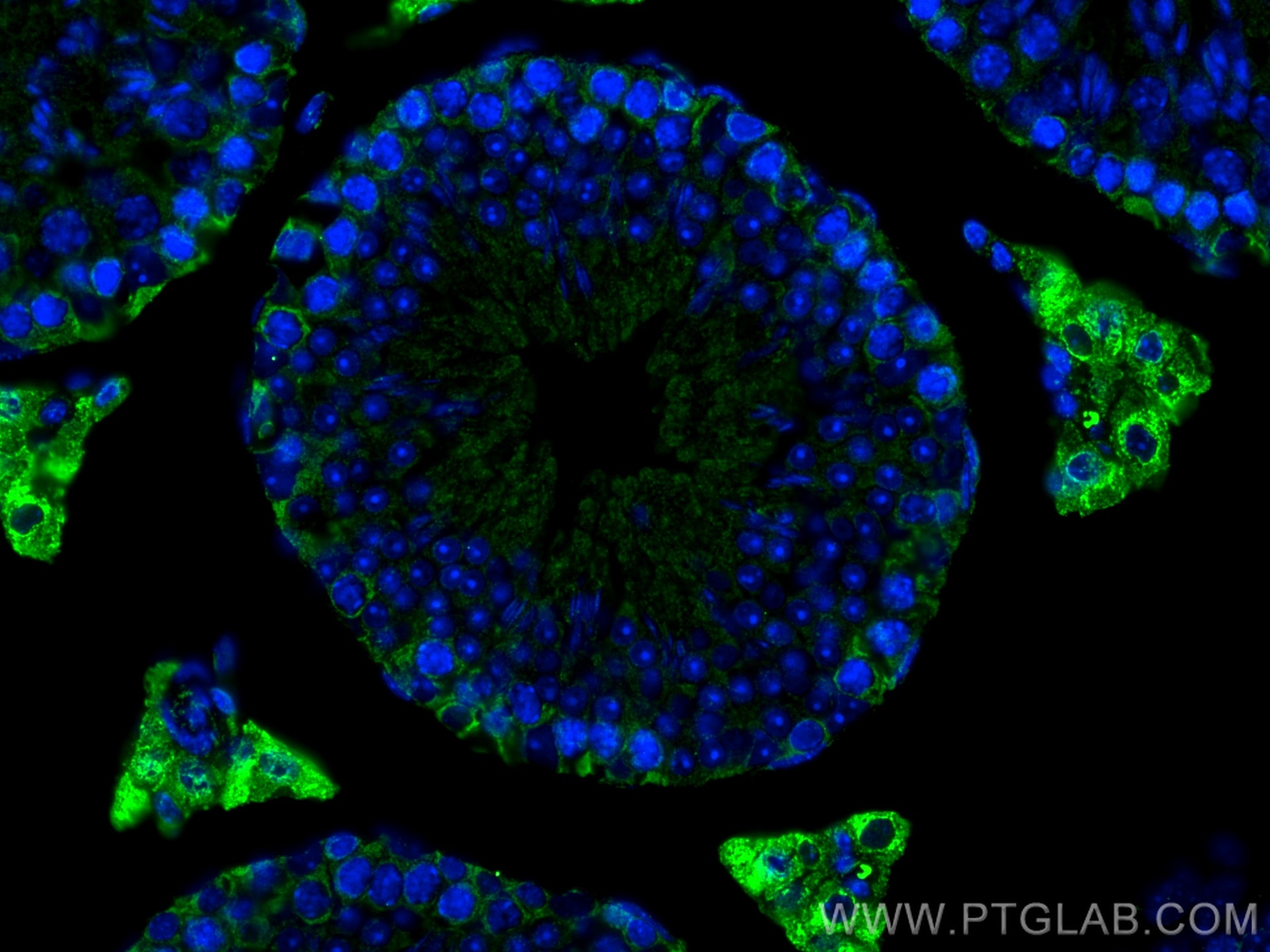SLC36A3 Monoklonaler Antikörper
SLC36A3 Monoklonal Antikörper für IF, IHC, WB, ELISA
Wirt / Isotyp
Maus / IgG1
Getestete Reaktivität
human, Maus
Anwendung
WB, IHC, IF, ELISA
Konjugation
Unkonjugiert
CloneNo.
1A8E6
Kat-Nr. : 67929-1-Ig
Synonyme
Galerie der Validierungsdaten
Geprüfte Anwendungen
| Erfolgreiche Detektion in WB | LNCaP-Zellen, Caco-2-Zellen, COLO 320-Zellen, HepG2-Zellen, PC-3-Zellen, ungekochtes Maushodengewebe |
| Erfolgreiche Detektion in IHC | Maushodengewebe Hinweis: Antigendemaskierung mit TE-Puffer pH 9,0 empfohlen. (*) Wahlweise kann die Antigendemaskierung auch mit Citratpuffer pH 6,0 erfolgen. |
| Erfolgreiche Detektion in IF | Maushodengewebe |
Empfohlene Verdünnung
| Anwendung | Verdünnung |
|---|---|
| Western Blot (WB) | WB : 1:1000-1:6000 |
| Immunhistochemie (IHC) | IHC : 1:500-1:2000 |
| Immunfluoreszenz (IF) | IF : 1:200-1:800 |
| It is recommended that this reagent should be titrated in each testing system to obtain optimal results. | |
| Sample-dependent, check data in validation data gallery | |
Produktinformation
67929-1-Ig bindet in WB, IHC, IF, ELISA SLC36A3 und zeigt Reaktivität mit human, Maus
| Getestete Reaktivität | human, Maus |
| Wirt / Isotyp | Maus / IgG1 |
| Klonalität | Monoklonal |
| Typ | Antikörper |
| Immunogen | SLC36A3 fusion protein Ag16556 |
| Vollständiger Name | solute carrier family 36 (proton/amino acid symporter), member 3 |
| Berechnetes Molekulargewicht | 511 aa, 56 kDa |
| Beobachtetes Molekulargewicht | 46-51 kDa |
| GenBank-Zugangsnummer | BC101092 |
| Gene symbol | SLC36A3 |
| Gene ID (NCBI) | 285641 |
| Konjugation | Unkonjugiert |
| Form | Liquid |
| Reinigungsmethode | Protein-G-Reinigung |
| Lagerungspuffer | PBS mit 0.02% Natriumazid und 50% Glycerin pH 7.3. |
| Lagerungsbedingungen | Bei -20°C lagern. Nach dem Versand ein Jahr lang stabil Aliquotieren ist bei -20oC Lagerung nicht notwendig. 20ul Größen enthalten 0,1% BSA. |
Protokolle
| Produktspezifische Protokolle | |
|---|---|
| WB protocol for SLC36A3 antibody 67929-1-Ig | Protokoll herunterladen |
| IHC protocol for SLC36A3 antibody 67929-1-Ig | Protokoll herunterladen |
| IF protocol for SLC36A3 antibody 67929-1-Ig | Protokoll herunterladen |
| Standard-Protokolle | |
|---|---|
| Klicken Sie hier, um unsere Standardprotokolle anzuzeigen |
